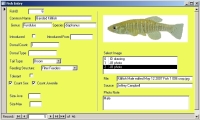Database: Design Discussions
This section describes the rationale behind well-designed databases for a number of environmental applications. These examples provide designs that can be re-used. They also serve as short tutorials in database design for ecologists and ecology for computer scientists. The Fish Survey is currently available.
- A fish survey database that was developed for Jug Bay Wetlands Sanctuary long term monitoring of stream and tidal fish. This database was also used as a case study illustrating how to design a good database. This was presentation at the Maryland Water Monitoring Council Annual Conference in 2008. The pages here, along with the presentation materials provide a good introduction to database design using environmental data.
- The Amphibian Activity database started as a simple way to store information about frog and toad calling activity during mating season. The database expanded when additional data became available from FrogWatch USA (when it was sponsored by the National Wildlife Federation). The project ultimately included a custom written program that incorporated a Geographic Information System (GIS) component to create an animated display of frog calling activity. The benefit from the custom development work was more sophisticated season-to-season comparison than would otherwise have been feasible.
- The Data Warehouse was created to contain a wide variety of weather, water quality, and astronomical data potentially relevant to multiple research projects. This example nicely showcases the value of relationships between data tables.
- The turtle movement and behavior database was created from several years of historical data in varied spreadsheet formats. The description explains the work required to consolidate that surprisingly diverse data. A notable feature was generating KML (Keystone Markup Language) files that can be used in Google Maps or Google Earth to visualize the data.

